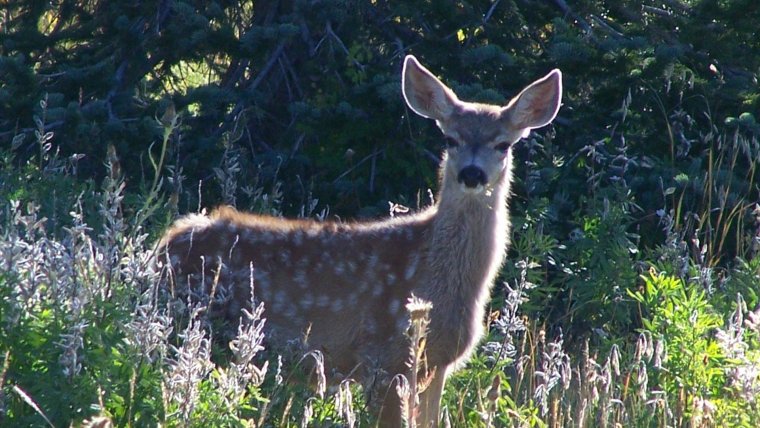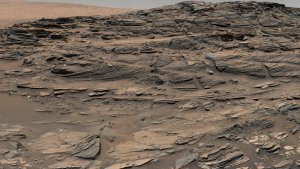| News / Space News |
Tracking Deer by NASA Satellite
NASA | APRIL 4, 2016
Mule deer mothers are in sync with their environment, with reproduction patterns that closely match the cycles of plant growth in their habitat. And new research using NASA satellite data shows that tracking vegetation from space can help wildlife managers predict when does will give birth to fawns.

A mule deer fawn emerges from the foliage in this National Park Service photo. ![]()
Mule deer birth rates peak shortly before the peak of annual plant growth, when food sources are increasing. Through a combination of satellite measurements and ground-based population counts, researchers can forecast the timing of fawning seasons based on vegetation.
Mule deer populations are closely monitored and counted by biologists and land managers, in part to determine population trends over time, which helps them set the proper number of hunting permits to issue.
At the same time, remote sensing scientists have a space-based way to track when vegetation greens up and how productive it is compared to drought or wet years. the health of vegetation.
The tool is called the Normalized Difference Vegetation Index (NDVI), which is a measure of the "greenness" of the landscape. It measures how plants absorb and reflect light -- the more infrared light is reflected, the healthier the vegetation. So by measuring the greenness of the mule deer habitat, scientists were able to mark the beginning and peak of the plant growing season – and the fawning season.
This kind of applied research is very important for making remote sensing data relevant to wildlife management efforts.
YOU MAY ALSO LIKE





